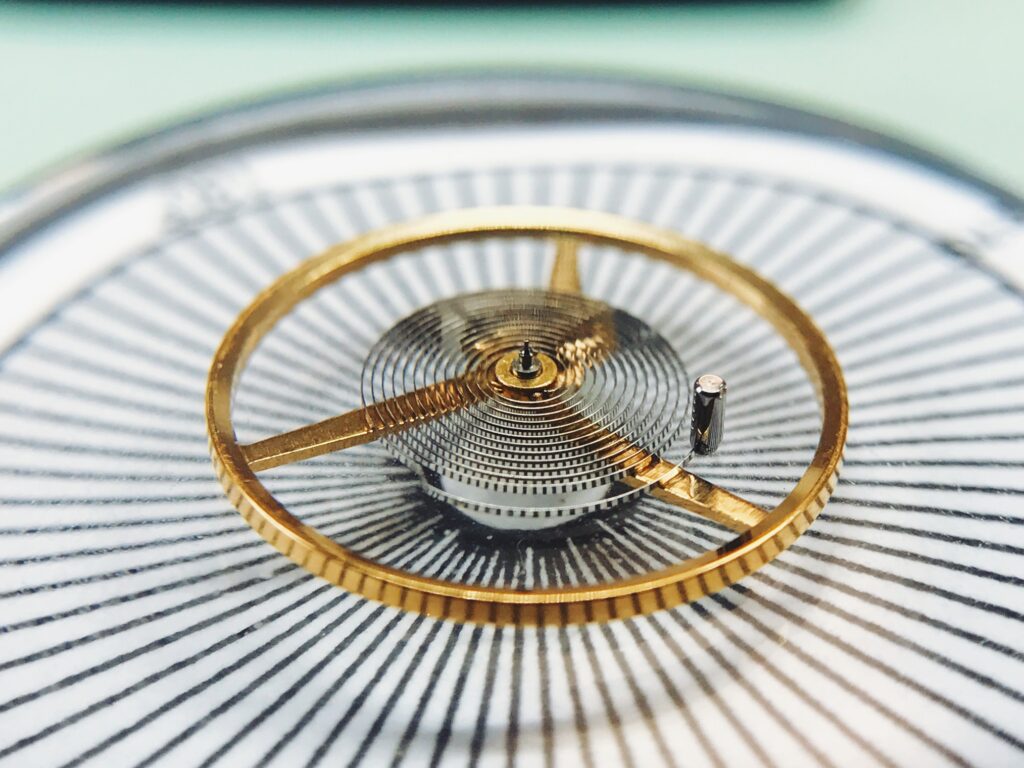The balance-spring is a small spring that through its elasticity regulates the oscillations of the balance. It is attached at its inner extremity to the axis of the balance and at its outer extremity to the cock. The flat balance spring, invented by the Dutch mathematician Huygens in 1675, had established a degree of isochronism which still left something to be desired. The flat balance spring was made of copper or iron and had only a few coils. Though imperfect, it gave the balance that it needed to become as accurate as the pendulum of a clock.
In 1795 Abraham-Louis Breguet solved the problem by upraising the spring’s last coil and reducing its curvature, to ensure the concentric development of the balance spring.
The Overcoil helps to equalize the action of the balance wheel so that it keeps the same time ( isochronous) either fully wound (the balance has a large amplitude) or run down (and the balance has a small amplitude). Thus the problem of the errant automatic watch is radically improved.
In theory, an Overcoil ‘breathes’ differently – more concentrically – and more efficiently than a flat spring, which (theoretically) contributes to less positional error and hence, better accuracy in all of the positions.
With the Breguet overcoil, the balance spring became concentric in form. Watches gained in precision, and the balance-staff erode less quickly. Breguet also perfected a bimetallic compensation bar in order to cancel out the effects of changes in temperature on the balance spring.
Standard Flat Hairspring
Breguet Overcoil Hairspring

CHARLEY PHOTO OF THE WEEK: Charley is patiently waiting for some food at dinner.







